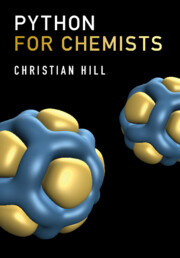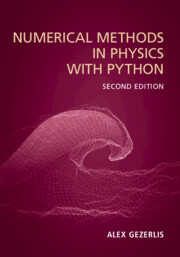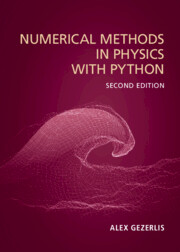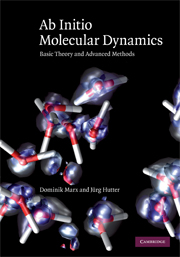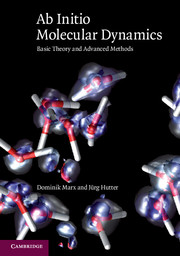Python for Chemists
This accessible and self-contained guide provides a comprehensive introduction to the popular programming language Python, with a focus on applications in chemistry and chemical physics. Ideally suited to students and researchers of chemistry learning to employ Python for problem-solving in their research, this fast-paced primer first builds a solid foundation in the programming language before progressing to advanced concepts and applications in chemistry. The required syntax and data structures are established, and then applied to solve problems computationally. Popular numerical packages are described in detail, including NumPy, SciPy, Matplotlib, SymPy, and pandas. End of chapter problems are included throughout, with worked solutions available within the book. Additional resources, datasets, and Jupyter Notebooks are provided on a companion website, allowing readers to reinforce their understanding and gain confidence applying their knowledge through a hands-on approach.
- Demonstrates how Python can be used as a powerful computational tool in a wide range of chemistry applications including thermodynamics, spectroscopy, kinetics
- Provides real data from chemical systems for readers to use for computational analysis, through an easy-to-use interface on the accompanying website
- Explains the implementation of fundamental data analysis techniques such as peak-finding, least-squares fitting, uncertainty evaluation and graphical analysis
Reviews & endorsements
'This book is a very useful addition to the library of python books, and is squarely directed at chemists, covering all the main aspects of python that they will find useful, without getting bogged down in programming detail. The clear focus on chemistry examples from the start means that students will be able to quickly perform useful, Python-based tasks without having to invest time in learning abstract syntax. Python for chemists will be a valuable resource for chemists who wish to add an element of programming to their skills base.' John McGrady, University of Oxford
'I used the author's previous book, 'Learning Scientific Programming with Python' as the textbook for my course for senior undergraduate and beginning graduate students in chemistry. This new book is targeted specifically towards chemistry and includes many new and useful examples and applications. The least squares optimization examples are particularly well-suited to advanced physical chemistry spectroscopy experiments and I like the way the individual topics are split into manageable bite-sized chapters. Overall, this will be a very useful book as a reference for researchers and instructors, advanced undergraduates and graduate students who need to learn modern numerical computation, data analysis, and graphical presentation techniques.' Trevor Sears, Stony Brook University
'The ability to write code is becoming an essential skill for chemistry students. Python is widely used in chemistry research and is increasingly taught in undergraduate courses, but it has lacked a comprehensive textbook tailored to chemistry students. Python for Chemists addresses this need by providing detailed coverage of the basics of the Python language and presenting a range of practical examples across the standard chemistry syllabus. This book will be useful for undergraduate and graduate students interested in learning and using Python in their studies and research and for instructors looking to teach Python in a chemistry context.' Benjamin J. Morgan, University of Bath
'This book would be a great resource for learning Python even for someone with a limited knowledge of chemistry. … Recommended.' D. B. Mason, Choice
Product details
October 2023Paperback
9781009102049
572 pages
243 × 170 × 8 mm
0.98kg
Not yet published - available from February 2025
Table of Contents
- 1. Introduction
- 2. Basic Python usage
- 3. Strings
- 4. Lists and loops
- 5. Comparisons and flow control
- 6. Functions
- 7. Data structures
- 8. File input/output
- 9. Basic numpy
- 10. Graph plotting with Matplotlib
- 11. The steady-state approximation
- 12. Liquid-vapour equilibrium
- 13. Jupyter notebook
- 14. LaTeX
- 15. Chemistry databases and file formats
- 16. More NumPy and Matplotlib
- 17. Thermodynamic cycles
- 18. Vectors, matrices and linear algebra
- 19. Linear least squares fitting I
- 20. Linear least squares fitting II
- 21. Numerical integration
- 22. Optimization with scipy.optimize
- 23. Vibrational spectroscopy
- 24. The morse oscillator
- 25. Solving ordinary differential equations
- 26. The oregonator
- 27. Root-finding with scipy.optimize
- 28. Rotational spectroscopy
- 29. Peak finding
- 30. Fitting the vibrational spectrum of CO
- 31. pandas
- 32. Simulating a powder diffraction spectrum
- 33. The Hückel approximation
- 34. Nonlinear fitting and constrained optimization
- 35. SymPy
- 36. Molecular orbital theory for H2+
- 37. Approximations of the helium atom electronic energy
- 38. Computational chemistry with Psi4 and Python
- 39. Atomic structure
- 40. Solutions.

